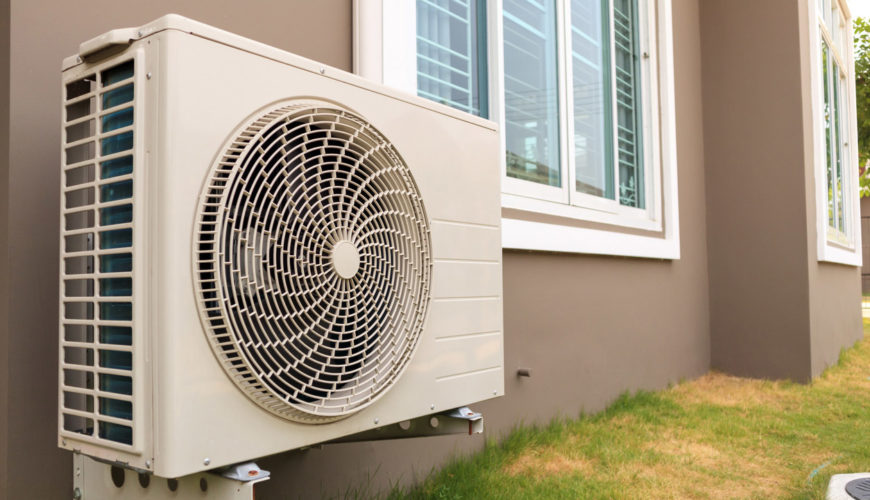The contents of an air conditioner are not exactly common knowledge. However, understanding how certain components function can be quite helpful. One of those components is the blower motor. A blower motor is an essential part of your air conditioner, and without it, the unit would not be able to operate.
Blower motors tend to malfunction every once in a while, and detecting the issue can be demanding if you do not know what you are doing. This article talks about blower motors, how they work, and how to discover a problem. Stick around to find out more on this!
If you want to learn more about air conditioning and AC installation, check out American Home Water & Air.
What is a Blower Motor?
A blower motor is one of the HVAC components whose primary purpose is to maintain the air circulation in your home. It is responsible for the air quality and humidity as well.
The blower motor keeps the air temperature optimal by pushing hot or cold air through the ductworks. The blower will help your home reach the temperature indicated on the thermostat.
Also, the blower motor consists of several parts, such as the motor, the casing, the fan assembly, capacitors, and so on. Occasionally, some of these parts lose their functionality, or it decreases over time. Therefore, maintaining the blower is of great importance. Stick around to learn what you can do about it!
How to Check Blower Motor?
The blower motor is not a complicated part of your AC, but it is vital. More often than not, once the blower starts malfunctioning, the entire system follows. Therefore, you will be stuck in a home without air conditioning unless you detect the problem on time. We are bringing you a checklist of things to do to prevent the problem and avoid huge costs:
1. Check the Power
Like all other appliances, the air conditioner also needs some sort of power source to operate. The power also reaches the motor blower, which is why this is one of the first elements you need to check when inspecting.
Look at the transformer to check whether the voltage is sufficient, and check the low-voltage circuit to determine if the fuse is working. Another essential part worth checking out is the circuit breaker. The breaker usually malfunctions due to overworking.
While you are at it, another thing to check is the windings. The power needs to be off as you do this for your own safety. Checking the windings is basically measuring the ohms. You will also find several wires in different colors, and they all represent different speeds. Measure the resistance between them to determine whether it is an open or short winding.
There are quite a few things to check when it comes to motor blowers and power. Doing this on time can help you avoid huge costs for repair and replacement.
2. Check the Capacitor
The capacitor is another vital component for a motor blower. If you realize that the power and windings are okay, but the motor is still not running, the capacitor should be the next thing on your list!
If the motor is not turning on, this does not necessarily mean that it is broken. The capacitor is an element that gives the blower motor a boost of energy, which then starts it. If this does not happen, you will be able to hear weird sounds coming out of it.
Since the capacitor is a tiny, almost unnoticeable part, many technicians do not pay a lot of attention to it. This is a horrible mistake because, more often than not, that is where the problem lies. If the capacitor is not giving the blower motor the energy boosts it needs; the blower will not start, causing the entire unit to stop functioning.
They tend to malfunction due to voltage changes, too much heat, improper installation, wrong sizing, etc. Keep your blower and the capacitor in the best condition possible to prevent unnecessary problems.
3. Check for Dirt and Debris
One of the significant parts of HVAC maintenance is cleaning the unit. Keeping every component clean can be crucial, as so many issues are caused by dust and dirt alone.
Since the blower motor is running all the time, it also collects a lot of dust in the process. The dust builds up and blocks the holes on the blower. This causes the motor to overheat and stop working. The majority of blower motors burn out due to this particular reason!
The dust stopping the blower isn’t the only issue; it also starts several other problems. Overheated blowers tend to burn the windings and bearings as well. Replacing all of this can be expensive, which is why you need to be careful. Clean the unit and avoid any kind of stress.

4. Check the Blades
The blades are an essential part of the motor blower as they are usually the first thing you notice. Their role is to turn around, spreading the hot or cold air. However, sometimes the blades stop turning, which is a cause for concern.
Before jumping to conclusions and thinking that the entire unit is broken, make sure to consider all the circumstances. In the winter days, when air conditioning is not necessary, the unit is in passive mode. Since it is not working, dust, dirt, and corrosion build up, making it difficult for the blades to run. A technician might have to kickstart the blower motor manually!
If you have zeroed in on the issue with the blades, make sure to turn off the AC before you do anything! You might also need a screwdriver to open the unit and take out the blades. Be extra careful when cleaning them up. Once you are done, put them back to their position, and try turning on the AC!
Endnote
Blower motors are indispensable elements of air conditioners. Their purpose is to help the air circulate a building or a house. As they are always working and turning, they break down sometimes. The breakdowns can happen for various reasons, and we have given you some of the most important ones!
Before panicking and thinking that your AC is broken, make sure to inspect your motor blower properly. Check off all the things from our list before calling the professionals. Make sure to maintain the unit regularly to prevent big problems from setting foot into your HVAC!




